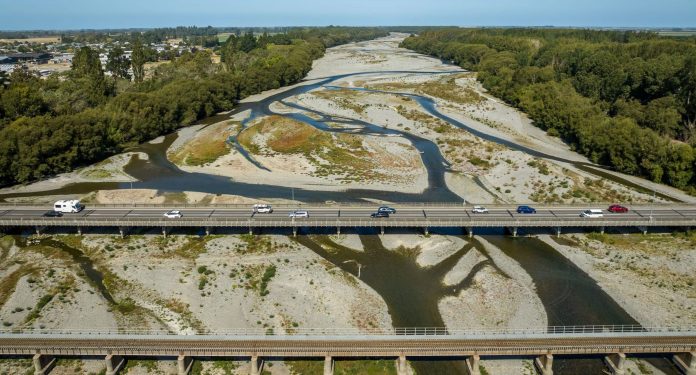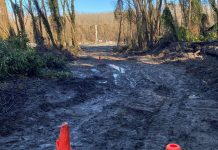
Ashburton Mayor Neil Brown says lizards will choose to move to make way for Ashburton’s second bridge.
And the birds will too.
NZTA system design regional manager Rich Osborne was providing the council with an update on the Ashburton second bridge project on Wednesday, with the government funding the bridge and the council paying for the new connecting road.
The overview from Osborne was that the negotiations with a preferred contractor are concluding, and once that contract is signed, the timeline and costs would be finalised.
He was confident construction would start “in early 2026”.
Mayor Brown wanted to ensure there wasn’t unnecessary spending on the project.
NZTA has been working with Environment Canterbury to provide enhanced habitat for bird nesting ahead of the breeding season, particularly for the threatened, black-billed gull (tarāpuka), away from the project area and ahead of construction starting.
But Brown said that construction would start after the nesting season, with the tarāpuka nesting in the riverbed between September and February, and once construction started, the birds would stay away during the two years of construction.
“If they are nesting now and finished before early 2026, when you start your path across the river, they will not nest near where the digger is digging, they will find somewhere else – because they won’t be there to start with.
“It’s all about being economic with the dollars.”
Then there are the lizards.
“This project is going to happen if there is a lizard there or not,” Brown said.
“If we can move them, cost-effectively, fine.
“Hopefully you can move them, and hopefully none will lose their lives, but the public will be interested in the cost of that plan.”
A lizard survey found 11 southern grass skinks, considered ‘At Risk – Declining’ in New Zealand, within the project boundary, and NZTA had previously stated it was “preparing plans for finding and relocating up to 140 of these skinks during construction”.
Osborne did not have the exact cost for the lizard management plan.
“What we are looking at is a site nearby, so any relocation I wouldn’t imagine would be particularly costly because we are not shifting them a great distance,” Osborne said.
Ashburton roading manager Mark Chamberlain said that the Harris Scientific Reserve, 10km south of the new bridge site, is the most likely site for rehoming the lizards.
NZTA confirmed yesterday that the cost of preparing both the Lizard Management Plan and the associated Wildlife Act Consent is $11,935.
The Wildlife Act Consent is essentially the approval required under the Wildlife Act to be able to trap and relocate the skinks.




